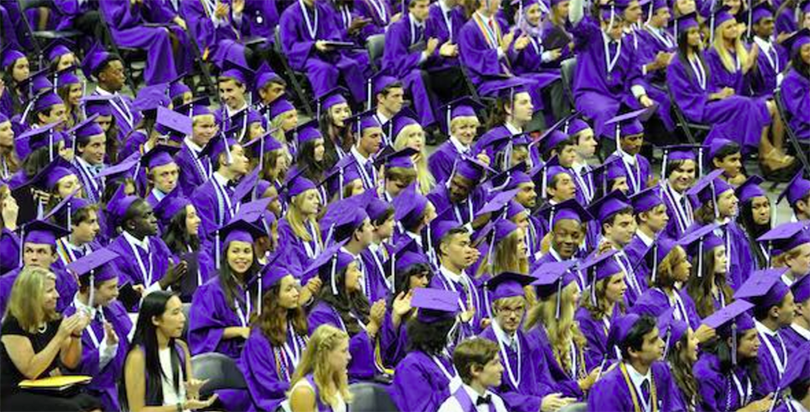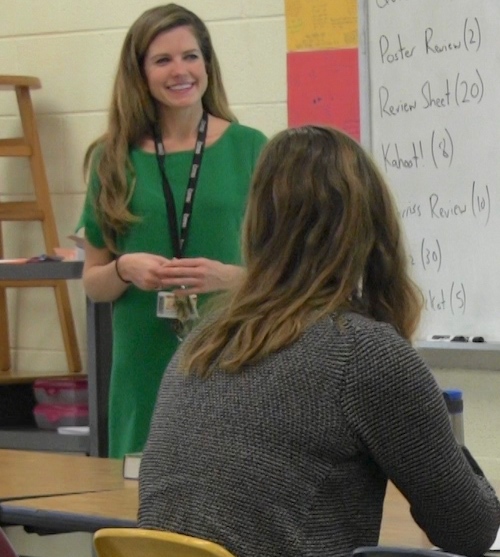Opinion: How to Extend the Reach of Great Teachers in Turnaround (or Any) Schools

But my heart didn’t leave West Charlotte. When I had the chance to return in 2014 and make a difference as a teacher-leader, I jumped on it — I wanted to help spark a turnaround. This year, when Johnson, now North Carolina’s new state superintendent, visited, he said he saw “a different world over here.”
When he taught at the school, he explained as I showed him around, the “team” of instructors teaching earth sciences had exactly one meeting during two years. I remembered the mindset then: in my first year at West Charlotte, a co-worker threw a box at me for asking if I could have access to the supply closet to look for lab materials. And my mentor teacher’s best — only — advice for classroom management? Yell louder.
But now, three years after I returned, the school’s science wing is calm, students are learning and showing growth, and teachers collaborate daily.
Here’s how it happened. West Charlotte was once one of the top schools in the country and a model of a well-integrated student body. But by 2009 it had come to feel like a school left behind. Teachers were poorly supported and grew discouraged or apathetic, which in turn led to student indifference and disengagement from schoolwork.
I left for a neighboring high school to help teachers struggling with low student growth scores on their evaluations become “highly effective” according to the state’s metrics. Even there, though, I couldn’t do everything I thought was necessary. As the head teacher of the biology team, I ran weekly meetings discussing lesson plans and assessments, but each of us still taught in isolation. I never knew exactly what went on beyond my classroom walls outside of our weekly discussions.
Then the district’s new Project L.I.F.T. (Leadership & Investment For Transformation) zone of turnaround schools gave me that chance — as a multi-classroom leader for biology at West Charlotte. L.I.F.T. focused on ambitious goals to increase student achievement and outcomes as well as teacher retention and leadership. It used the Opportunity Culture teaching model, which expands the reach of strong teachers — allowing me to help many more students while working with my peers to improve their practice.
As an MCL, I work in classrooms daily and also lead our team. I’ve reached more than 1,200 biology students in three years, four times the number I would have taught as a regular classroom teacher. I coach my team, teach with them, pull students to work one-on-one, and lead data meetings. I take ownership of each biology teacher’s and student’s successes and failures, the day-to-day execution of lessons, and our results on the state biology exam. The quality of the lessons I write, the meetings I plan, and the data we analyze directly affect all 1,200 of those students.

I often feel I’m providing support to teachers, both novice and veterans, that I wish I had received but never did.
During the pre–L.I.F.T. era, classroom management at West Charlotte took precedence over instruction and understanding student data. My assistant principal told me to stop doing hands-on labs and science demonstrations and use more worksheets instead. A class silently engaged in bookwork was always preferred by administrators to a classroom with students up moving, investigating, and asking questions.
Today, my team prioritizes creating engaging lessons that also meet needs identified by our data. We have two hourlong team meetings weekly, discussing the upcoming learning standards. I provide very specific advice for addressing misconceptions I’ve observed in recent classes, such as “Plant and animal cells both have vacuoles, but vacuoles are larger in plant cells. Many students think that animal cells don’t have a vacuole, so be sure to explicitly state that and point it out in the cell diagrams.”
I then have briefer meetings with each teacher to discuss specific action steps. “Based on the last quiz, your class still doesn’t seem to fully understand DNA replication. What intervention can we put in place?” or “We need to increase the pacing and urgency in your classroom. At the end of class, cold-call on students using these vocabulary cards.”
My schedule’s flexibility also lets me have frequent informal meetings with teachers in the hall and their classroom while co-teaching. They know they can tell me where they need help, without fear. “Ms. Burns, I just tried to explain protein synthesis and they looked at me like I’m crazy. Can you come into my second-block class and tell me what I’m doing wrong?”
All this has led to the huge shift in student and teacher culture. In just my first year as MCL, the team moved from falling short of the state’s annual student growth expectations to meeting growth; in fact, figures from last fall show an increase in student proficiency from 22 percent to 38 percent.
Turning around a struggling school like West Charlotte was takes time, and we’re certainly not claiming victory yet. But these numbers reflect real impact on the lives of our students. And teachers.
These are the changes policymakers can’t fully grasp when they look just at a school’s report card. But Superintendent Johnson saw up close the “different world” we’re creating. With school, district, and policy support that makes multi-classroom leadership possible, more students have access to talented teachers, supported by teacher-leaders. And the additional collaboration, guidance, and empowerment that teachers receive from a multi-classroom leader serve to recruit and retain effective teachers and strengthen the entire teaching profession. Every turnaround should start like this, with highly effective teacher-leaders who directly impact student outcomes.
Erin A. Burns is the multi-classroom leader for biology at West Charlotte High School, one of more than 30 Opportunity Culture schools in the Charlotte-Mecklenburg district. She has previously written about her experiences here and here. Read a vignette about her experiences at OpportunityCulture.org.
Get stories like these delivered straight to your inbox. Sign up for The 74 Newsletter

;)